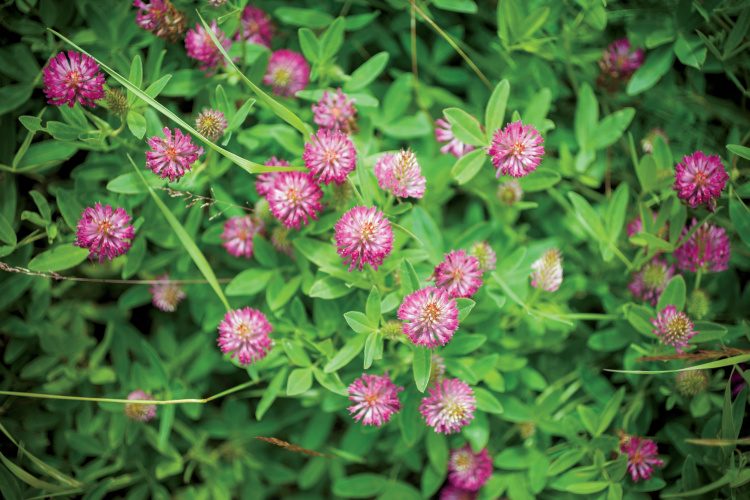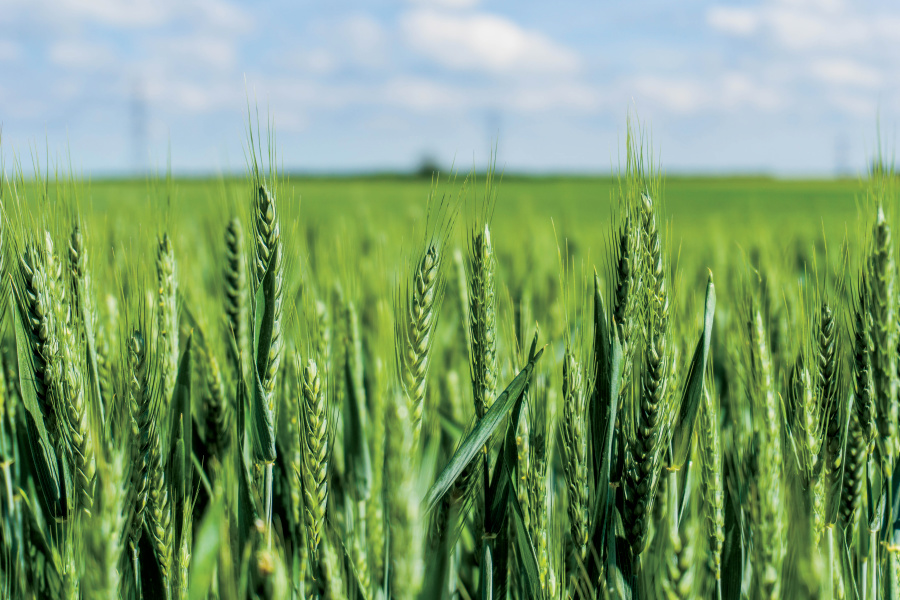Home > Tennessee > Tennessee Environment > How Cover Crops Protect Farmland and the Environment
How Cover Crops Protect Farmland and the Environment
In partnership with: Tennessee Department of Agriculture

Crops continuously cover 100 percent of Matt Griggs’ farmland – even in the dead of a Tennessee winter.
As soon as the Griggs family harvests a field of corn, soybeans or cotton, the planter follows with the seeds of traditional winter wheat or a cocktail of cover crops like crimson clover, cereal rye, winter peas, vetch and sometimes radishes (a special, deep-rooted variety not intended for eating).
The use of a cover crop biomass system won this West Tennessee farmer the 2017 American Soybean Association Conservation Award for the South Region.
“Rather than just maintaining the status quo on my land, I’m convinced that because I’m still a relatively young farmer I need to find ways to protect our soils and our environment,” says Griggs, who farms with his wife, sister and brother-in-law at Griggs Farms LLC, established in 1882 in Humboldt. “We need to produce high yields in a way that is sustainable and does not reduce our natural resources. I care tremendously about my impact on the environment.”
Farmers like Griggs plant cover crops as a conservation-minded management tool. They cover the soil with plants between cash crops to reduce soil erosion, improve soil fertility and quality, enhance water infiltration, control weeds and more. Griggs’ legumes and grasses grow head-high by spring. Then, he flattens them with a roller-crimper to create a thick, green, nutrient-dense carpet of cover-crop mulch, or biomass, to plant his corn, soybeans and cotton through.

Uncovering the Benefits
A growing number of Tennessee farmers are finding value in cover crops, a practice that has been shown to build organic matter and protect soil during wind and rain events. The practice reduces the movement of nitrates during heavy rains and retains moisture. It also controls weeds while using less herbicide. Still, cover cropping is not a perfect system. Farmers often face increased insect pressure and challenges to establish adequate seed-to-soil contact for cash crops, particularly cotton, says Larry Steckel, professor and weed control specialist for the University of Tennessee Extension.
“The big benefit now, quite frankly, is weed control,” says Steckel, who has studied weed control with cover crops for a decade. “Even with the cost of the cover crop seed, we’re saving about $20 per acre on weed-control costs. More growers are adopting cover crops here and a big part of it is due to the weed control it can help with.”
Griggs has reduced his herbicide bill by as much as $40 per acre with cover crops. Steckel says cover-crop mulch has successfully stopped the growth of some herbicide-resistant weeds or hindered their growth enough to give farmers an increased time frame to spray and kill invasive weeds with evolving herbicide technologies.
But, as impressive to Griggs are the improved water infiltration and a cover crop system’s “tremendous impact” on the soil profile. The data he’s collected on his farm over the last six years shows soil health improving and evidences incredible advancements in his soil’s water infiltration. His soils now can store valuable moisture even from the most untimely Tennessee rains, which would typically have run off his previous field conditions.
“Those are the biggest driving forces that have kept me in cover crops,” Griggs says. “I know it’s going to be a long-term process, but I’m looking to protect our farm going into the future.”
Benefits of Cover Crops
- Manage soil erosion
- Enhance soil fertility
- Improve soil quality
- Water management
- Weed control
- Disease management
- Pest control
- Improve wildlife habitat



